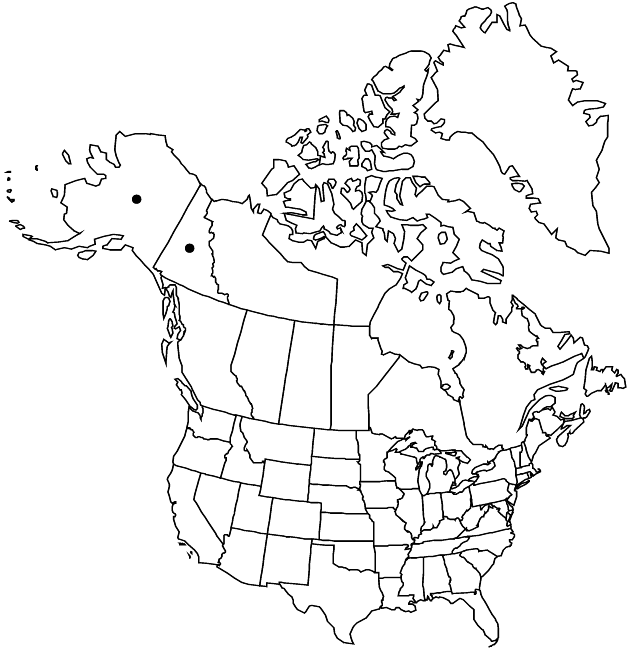Erigeron purpuratus
Pittonia 4: 155. 1900.
Perennials, (2–)3–9(–14) cm; taprooted, caudices diffuse with extensive systems of rhizomelike, relatively long and slender branches. Stems erect (simple, ± scapiform), villous, minutely glandular. Leaves mostly basal (persistent); blades linear to narrowly oblanceolate, 15–30(–45) × 1–2.5(–3) mm, margins entire or (mostly on early leaves) with 1–2 shallow lateral lobes or teeth, faces sparsely hirsuto-villous or glabrous, minutely glandular. Heads 1. Involucres 6–9(–10) × 9–15 mm. Phyllaries in 2–3 series, sparsely pilose (hairs 1–3 mm, with colored cross walls) or glabrous, minutely glandular. Ray florets 40–90; corollas white to pink or purplish, 5–9 mm, laminae (filiform, 0.3–0.8 mm wide, involute) erect, not coiling or reflexing. Disc corollas 4–5 mm. Cypselae 1.8–2.7 mm, 2-nerved, faces sparsely strigillose to glabrate; pappi: outer 0 (or inconspicous), inner of 28–40 (pinkish to purplish) bristles. 2n = 18.
Phenology: Flowering Jun–Aug.
Habitat: Sandy and gravelly stream banks, gravel bars, sandy beaches, gravelly slopes, alpine tundra
Elevation: 100–1400 m
Discussion
The erect, involute ray laminae of Erigeron purpuratus, E. denalii, and E. pallens distinguish them from other species of sect. Tridactylia. Distinctions among these species were studied by G. L. Nesom and D. F. Murray (2004).
Selected References
None.
